7 Tips to Building an Aluminum Boat Successfully the First Time.

Building your own boat is a huge accomplishment and something I will never forget. Boats bring people together, and can take you places a car just can’t go. For those of us who get satisfaction out of creating something by hand, there is nothing quite like building a boat. There are few straight lines, and the skill required is high, even for those that have years of experience.
There are a number of companies online now, such as Metalbaotkits.com, who offer reasonably priced designs that you can download and build at home. If you’re a knowledgable welder, building your own boat is quite doable and very rewarding. A skilled welder ca lear the basics of aluminum boat building with some practice. However, there are a number of pitfalls that could cost you money and sink your dreams prematurely. So, before you go rushing in to build your first boat, consider the following:
1) What kind of aluminum should I use?
Boats are not just made with any old aluminum that you find at the metal store.The aluminum you want is marked by a few possible grades, either 5086 or 5083. It’s important you look at what your designer specifies and ensure that your metal supplier is aware of the grade you require.
In general, 5xxx series aluminum contains magnesium. This gives the metal a higher tensile strength without having to heat treat, and still allows for excellent workability and welding. It’s also important that you use an appropriate filler material. 5356 was specifically designed to work with 5000 series metal, and should be used when welding either 5086 or 5083 aluminum. For more information on types and grades, follow this link.

2) Laser-cut vs waterjet vs router table?
After you purchase your design files, you will need to contract someone to cut the material for you. There are a number of options; the availability in your local area will likely dictate this choice for you. We used CJM Technologies, who specialize in CNC boat kits. They will fully cut your kit, and form all parts to spec. They even draw on the assembly lines for you. Here are some things to consider for the options:
Laser: the limiting factor in laser-cutting is not speed or quality, but the size of the table. Many companies won’t be able to nest your design. For example, we needed a 5’x20’ sheet of aluminum for our boat. Only a large router at CJM was able to tackle this.
Waterjet: a good option and many shops have a machine large enough to cut your parts. The downside is edge prep. The waterjet leaves sand particles in the surface of the weld. You will need to grind all the edges before welding.
Router: the best option for boat building due to large tables and no edge prep. The downside is that detailed cutting is limited to the size of the end mill being used. As most boat designs have been designed for a CNC router, this is not normally an issue unless there is an operator error. While a router is a great option, a bit of cleanup might be required. I found some interference issues in the joints of my jig, which required me to get in there with a little file and take out the cutter radius to make the jig fit correctly.
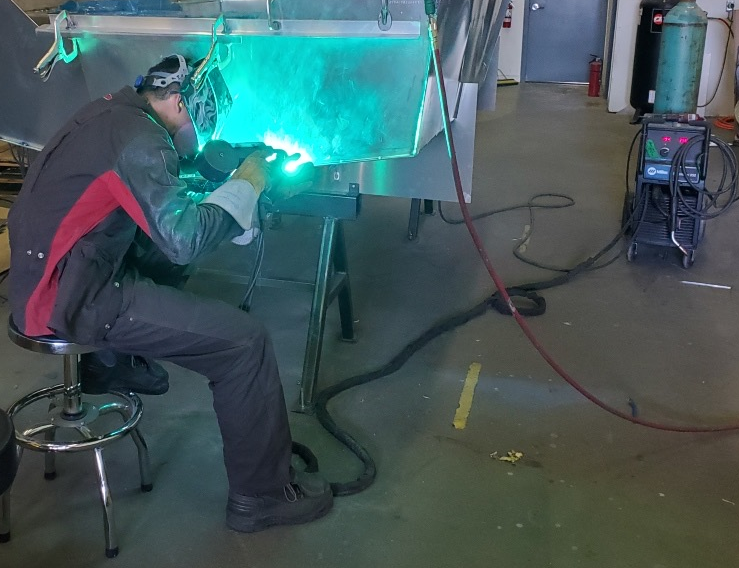
3) What is a pulse mig welder and do I need one for boat building?
Don’t think you’re going to get away with your trusty TIG welder to weld this boat. ⅛” aluminum transfers heat very quickly, even if you don’t burn through while welding. TIG WELDING WILL WARP AND DISTORT YOUR BOAT. This is bad. Let me say that again: DON’T TIG WELD EVERYTHING. Got it!? Ok good.
So you’re going to spool-gun it then, right? Well, if you can afford a pulse mig machine, this is what you want. Professional boat builders will only use this kind of machine. However, they cost your first born child to buy, so maybe see if you can rent one for your build.
If a pulse mig is not an option, you need a spool gun for your welding machine. They are reasonably priced and most major manufacturers make them. You will need exceptional welding skills to use a standard spool gun though. Your boat kit will come with lots of crop/scrap aluminum. Practice your different welds. Avoid burning through. I have been welding for 17 years and completely burned through my first boat. I can’t stress this enough: take your time and PRACTICE.
Even better, hire a friend with boat-building skills. Have them go over the welding techniques with you. You will thank us later for this.
4) Setting up the jig?
The design files come with a jig. I chose to put mine on some custom-built sawhorses. You don’t need to do this; you can work off the floor. But it’s very important that the jig can’t move and is completely square. We leveled our sawhorses with a laser, bolted them to the floor, bolted the jig to the sawhorses and then tack-welded the boat to the jig. Some builders choose not to tack weld the jig. If it’s your first build I would highly recommend tacking the boat to the jig, as this will help you control distortion from welding.
see figure 1
For more on this step see our bog:
How to Build an Aluminum Boat – Part One: Setting up the Jig
5) What is incremental backstep welding?
Boat builders use the ‘incremental backstep’ process. Read the instructions that have come with your kit carefully on this one and follow your designer’s standards.
The primary idea behind back step welding is to eliminate distortion as much as possible. Starting from the center of the boat, work your way out in 6” increments, but welding towards the center. This is very important. Weld towards the middle of the boat, but sequencing your welds out for the middle. No idea what I’m talking about? See diagram.
It’s important to work your way out in all directions, skipping every other weld in the process. Try to keep the heat from being concentrated in one area for too long. My designer stressed the importance of this process. DO NOT GO CRAZY WITH THE WELDING. Follow the incremental back step process.
see figure 2
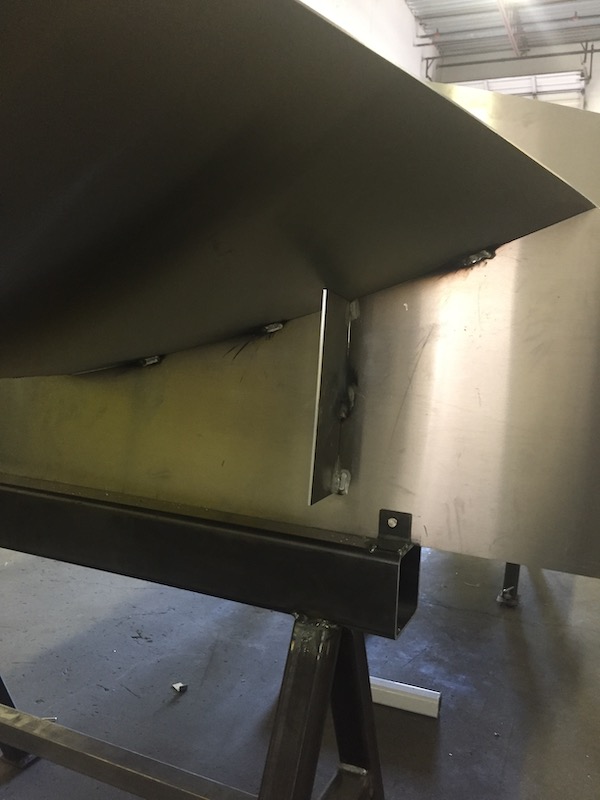

6) Forming the handrails?
This one is easy. DON’T DO THIS YOURSELF. Unless you have experience or access to some expensive machines, you are going to regret it. I certainly did on my first build. Learn from me: I bought the $800 manual bender from the local store. After about eight hours of sweating profusely from manual tube bending, I will never do this again. Yes, you could heat the aluminum with a torch and make things easier. But if you don’t have these tools already, or access to them, just get a pro to do it. You’ll have enough on your plate already if this is your first build.
7) Transom height?
It’s important you decide what motor you’re going to mount on your boat before building the transom. Talk to the motor manufacturer and determine the best operating height of the motor. Not doing so could damage your motor or greatly reduce the performance. It’s a lot easier to measure in the beginning than to cut the transom down after you realize your motor is either too high, and sucking in air, or too low, and causing excessive drag.
We hope these tips will help successfully build your first aluminum boat. Take these lessons from us, and get a specialist or a friend with the preferred experience to assist you. It will make the process that much smoother, and for those that feel boat-building just isn’t for them, no worries! We can do it for you! Learn more about our custom-built aluminum boats here.
Thanks for reading,
Greg (& The Adventure Dog)
Owner, Adventure Marine
Please note: Thank you for visiting our site and we appreciate your patronage. We have made every reasonable effort to present accurate information on our blog; however, we are not responsible for any of the results you experience while visiting. This blog is made available by Adventure Marine for educational purposes only as well as to give you general information and a general understanding of boating, manufacturing, and parts, not to provide specific contruction/welding/legal advice. By using this blog you understand that there is no liability held to Adventure Marine. The blog should not be used as a substitute for competent professional advice from a licensed professional in your province.
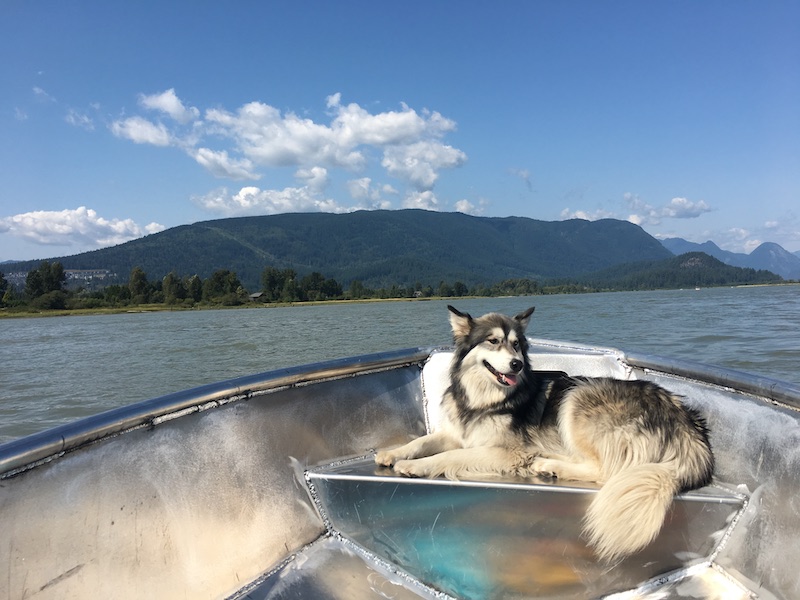

5 Reasons to Convert your boat to an outboard motor
Inboard maintenance is difficult, cramped, and often results in more costly repairs because someone else has to perform the gymnastics on your behalf.
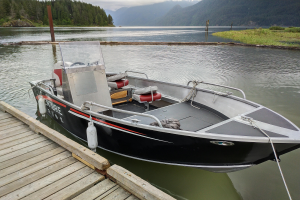
Customer Review ADV 16 Elaho
Some ancient mariner once told me, “Everyone has their own reasons for owning a boat and what is
important to you might not be important to them.”

Adventure 16 Elaho the crossover of boats
Dec 12/2021 2022 Adventure 16 Elaho The crossover of boats After 2 years of extensive research and development, and 3 prototype boats, Adventure Marine is finally ready to begin deliveries of our Adventure 16 Elaho line of 16’ fishing boats. The owner and CEO Greg Epp said, “I have been working hard for over 2 years to see this day arrive. I’m really excited to start this next chapter in the company’s 48-year

Adventure 16 Elaho Edition 500-Mile Review
It was long overdue 47 years to be exact. Adventure Marine has never manufactured boats. Even though we have been building high-quality marine products since 1974. It is time to write a new chapter in our companies history and bring to market something special.

Line Guard Narcos: Slingin propeller guards in Mexico
The night before I was scheduled to leave, a man on a motorcycle showed up at my hotel with a satchel of US dollars sent by the boat captain. I led him upstairs to my room and we counted out the cash. After converting to Canadian dollars, I was just under the limit I could bring back without a declaration, which would involve trying to prove to the Canadian authorities that I was doing legitimate business in Mexico with a pile of US dollars.
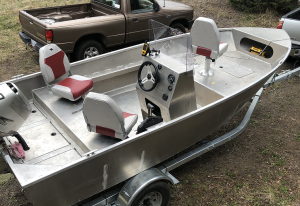
How to Build an Aluminum Boat – Part One: Setting up the Jig
One of the first steps, and also one of the most important, in building your boat is setting up the jig. Boat hulls are constructed in a number of different ways, but for the purposes of this blog, I am going to focus on a design from MetalBoatKits.com. I have built two of designer Rick Wellins’ boats now. They have been rebranded as the Adventure 12 and the Adventure 16, as I have made modifications to both designs to suit my needs. They both use a similar jig and the setup process is identical for both boats.